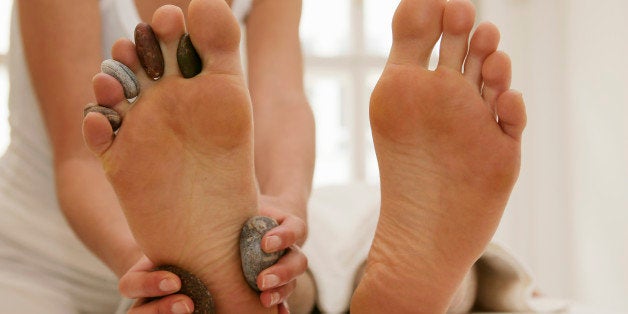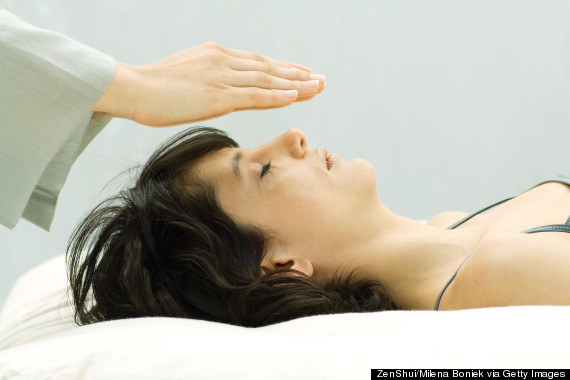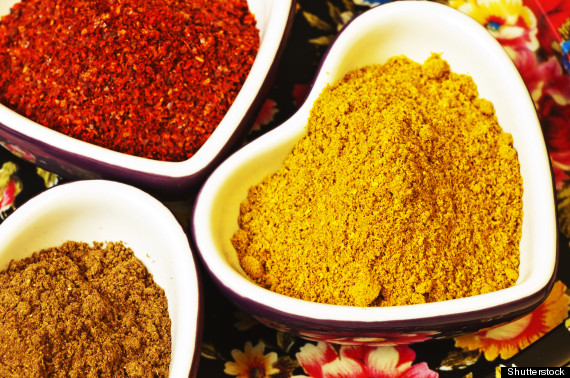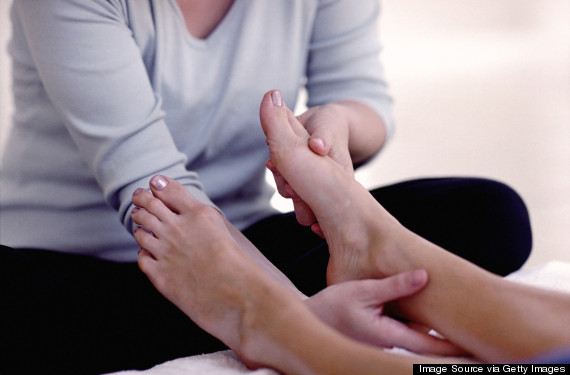
Ironically, when it comes to treating the ailments of modern life -- which can be exacerbated by chronic stress and a relentlessly fast-paced life -- thousand-year-old healing methods might be some of the best remedies.
The exploding popularity of meditation and yoga in the West -- the physical and mental health benefits of which are supported by an extensive body of scientific research -- have put ancient healing methods on the map. In addition to the more popular mindfulness practices, there are many more timeworn (but still science-supported) self-healing methods you may not have heard of that can work wonders in boosting your health and well-being.
As the early Greek physician Hippocrates said, “The natural healing force within each of us is the greatest force in getting well.” Here are five ancient self-healing techniques that may just be worth trying.
Tai Chi

Like yoga, this calming, low-impact exercise comes with a host of scientifically backed physical and mental health benefits. Tai Chi was originally developed as a type of Chinese martial art and a moving meditation, with a focus on attention, breath and mindful movement. The practice is thought to unlock the Chinese concept of qi, the energy force that flows through the body, and encourage proper flow.
Studies have found that when used to supplement traditional treatment, Tai Chi can help improve quality of life for breast cancer patients, maintain bone density, reduce pain for patients with severe osteoarthritis in the knee, promote heart health, reduce hypertension and more.
"A growing body of carefully conducted research is building a compelling case for tai chi as an adjunct to standard medical treatment for the prevention and rehabilitation of many conditions commonly associated with age," Peter M. Wayne, Harvard Medical School professor and director of the Tai Chi and Mind-Body Research Program at Harvard, said in a statement.
Acupuncture

Acupuncture may seem unappealing to some -- it does, after all, involve pricking lots of little needles into your skin -- but research has shown that the ancient Chinese medicinal practice can really work. Like Tai Chi, acupuncture seeks to balance the flow of qi in the body by inserting needles into certain pathways, or meridians, throughout the body. Western practitioners tend to view the practice as a way to increase blood flow by stimulating the nerves, muscles and connective tissue in various parts of the body, according to the Mayo Clinic.
Research has shown that acupuncture may be helpful in the treatment of headaches, hypertension, depression, back pain, nausea, rheumatoid arthritis and other conditions.
"Western doctors are beginning to embrace it, sometimes sending their patients to acupuncturists for specific conditions," The New York Times wrote in 2010.
Reiki

According to practitioners of the ancient Japanese art of Reiki, the power of touch is able to heal a variety of different physical ailments and relieve stress. In a Reiki session, the practitioner places his or her hands over various parts of the patient's body, with the goal of directing and stimulating the flow of "life force energy."
"Reiki treats the whole person including body, emotions, mind and spirit creating many beneficial effects that include relaxation and feelings of peace, security and wellbeing," according to the International Center For Reiki Healing.
Although research on Reiki's benefits is limited (and conflicting) at this point, some studies have suggested that Reiki may be helpful in reducing anxiety, stress, and pain, improving symptoms of fatigue and depression, and boosting well-being. The technique has started to become more accepted in the West, and is increasingly used as part of an overall emotional care plan in disease treatment in U.S. hospitals, along with more conventional care, as well as holistic healthcare centers.
Ayurveda

As the popularity of meditation and yoga have risen in the U.S., so has interest in Ayurveda, the 5,000-plus-year-old Indian "science of life" that deals with healing through food, lifestyle and herbal supplements. The theory goes that Ayurveda can help heal imbalances in the body's doshas -- the three basic energy types -- which include pitta (the principle of transformation; the fire element), vata (the energy of motion; the air element), and kapha (the principle of growth; the earth element).
Ayurvedic practitioners believe that each person has some vata, pitta and kapha in them, but that one or two is typically dominant, explains the University of Maryland Medical Center: "Many things can disturb the energy balance, such as stress, an unhealthy diet, the weather, and strained family relationships. The disturbance shows up as disease. Ayurvedic practitioners prescribe treatments to bring the doshas back into balance."
Although Ayurveda is understudied in the West, preliminary research has looked at the effectiveness of Ayurvedic programs in the treatment of depression, anxiety, hypertension, Alzheimer's and other medical conditions. Ayurvedic medicine should be used under the supervision of a trained practitioner -- some may be harmful, particularly if used improperly.
Reflexology

By applying pressure to specific parts of the hands, feet and ears, reflexology is thought to improve health by using "body mapping," a system that links these pressure points with various organs and systems throughout the body.
Some studies have found reflexology may be helpful in reducing pain, anxiety and depression, as well as promoting relaxation and stress relief, the Mayo Clinic reported, but claims that reflexology can treat illness such as asthma and diabetes have not yet been supported.